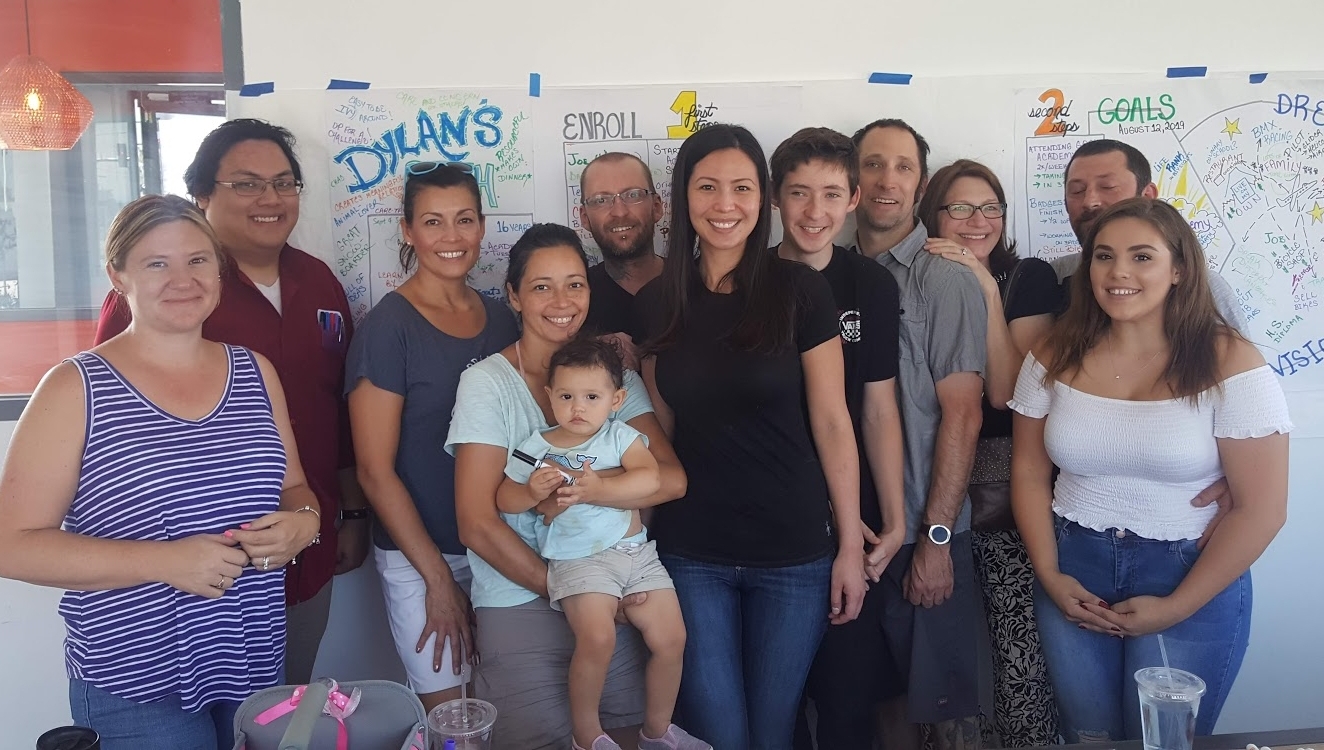PATHs to PossAbilities offers strategic organizational and life planning using person-centered tools to help individuals and businesses envision their desired future and translate this vision into a clear plan with defined action steps.
~PATH~ Planning Alternative Tomorrows with Hope
Wondering where you are going in life or which PATH to take?
A person-centered tool called the PATH (Planning Alternative Tomorrows with Hope) can provide the focus, direction and inspiration you are looking for.
The PATH: Making Life Opportunities Happen
Dreams come alive with the PATH, a person-centered tool used to develop better tomorrows. A future plan created through the PATH process, is more than just a plan – the PATH is an ongoing, problem solving process that relies upon a small group of people who meet for mutual support, brainstorming, and strategizing.
Goals are defined to identify hopes and dreams and to ward off worst-case scenarios.
A person’s hand-picked community is cultivated as a circle of support to ensure that progress occurs.
The role of staff, family, and other team members is to enable and assist the person to identify and access a unique mix of paid and unpaid services to meet their needs.
It is also to provide support during planning and implementation.
“PATH planning creates a space of empowerment—a level playing field—that allows for consideration of personal preferences as well as health and safety needs, without unnecessarily restricting freedoms. The best person-centered planning helps people to live better lives, with support to do the things most important to them.” Administration for Community Living
Discover more about Yourself and Your Dreams, by creating a Personalized Plan with those who Support You!
About the PATH Planning Process
Phase I
Phase II
Phase III
Discovering Your Dreams!
Pre-PATH Planning:
A first meeting with the PATH Seeker and their family / caregiver allows for "discovery" about the PATH and PATH Seeker's dreams.
Creating a Personalized Plan!
PATH Facilitation:
Facilitation of the PATH Plan with the PATH Seeker results in a positive and possable future plan that includes action steps and goals.
Rallying your Support!
Circle of Support:
Involving a PATH Seeker’s circle of support is invigorating and offers greater support to follow and succeed with their PATH plan.
An Overview of the PATH Process:
The PATH begins by developing the desired life outcomes, also known as the "North Star" or "Deam."
The PATH process uses a strength-based perspective, focusing on the strengths, interests, values, and passions of the PATH Seeker.
The PATH process includes a "Circle of Support" which refers to people engaged in the PATH Seeker’s life.
Everyone involved in helping the individual plan for their future, work backward from the Dream to the Present.
Th planning process is captured visually through a process called graphic illustration.
Unique Aspects of the PATH Process:
Circle of Support is a term used to refer to a group of people that are connected to a PATH Seeker in some way and who are willing to contribute toward the PATH Seeker’s success. These people can include family, friends, work/volunteer colleagues, supervisors, teachers, neighbors, church friends, club or sports friends - anyone who knows the PATH Seeker and wants to support them in their desire to move forward in their life!
Backwards Planning is the term that we use to refer to the fact that we dream first in the PATH process and then figure out what the necessary steps are to achieve the dream. It’s is smarter to know where you are going before you pack your bags for your trip!
Graphic Illustration is the art of visually capturing key concepts, making connections between information and providing an overall picture of the PATH process. Graphic illustration or recording:
helps make visual sense of information, allowing participants to process and reflect on the meaning of their collective experience
illustrates different ideas, agreements and perspectives to bring a complete plan together in a powerful way
focuses group discussions by highlighting key concepts and showcases agreements and actions
records data in a visual way that allows people to view the process well beyond the event
captures a visual representation of the PATH Seeker’s “Dream”
creates a record of the planning process, reflecting relevant information, participants and outcomes
PATH Planning Outcomes:
The creation of or further enhancement of the future vision for the PATH Seeker and their Circle of Support
The discovery of additional ways to successfully include the PATH Seeker in their natural and preferred communities
An increase in the quality of life of the PATH Seeker through choices and empowerment
HCBS final rule for Person-Centered Planning requires a person-centered service plan for each individual receiving Medicaid HCBS: Final Rule Published January 26, 2014 Effective March 17, 2014
In addition to this being a fun, connecting, empowering and inspiring planning process, Person-Centered Planning is now REQUIRED by the Colorado Centers for Medicaid and Medicare (CMS). According to federal law guiding the provision of supports and services for consumers receiving Long Term Services and Supports (LTSS), all participating programs/organizatitons receiving public funds CMS must provide Person-Centered Planning for consumers of their services. Person-Centered Planning is about putting the person in the middle of the planning process versus “checking a box” or “filling out a form.” Person-Centered Planning is about planning “with” and not planning “for” the individual. Read more.
We invite you to begin exploring a Future that is Authentic, Fulfilling and
Driven by You, your Passions and your Dreams!
The path was Developed by John O'Brien and Marsha Forrest and Jack Pierpoint.
"Planning Alternative Tomorrows with Hope beings with the end in mind."




